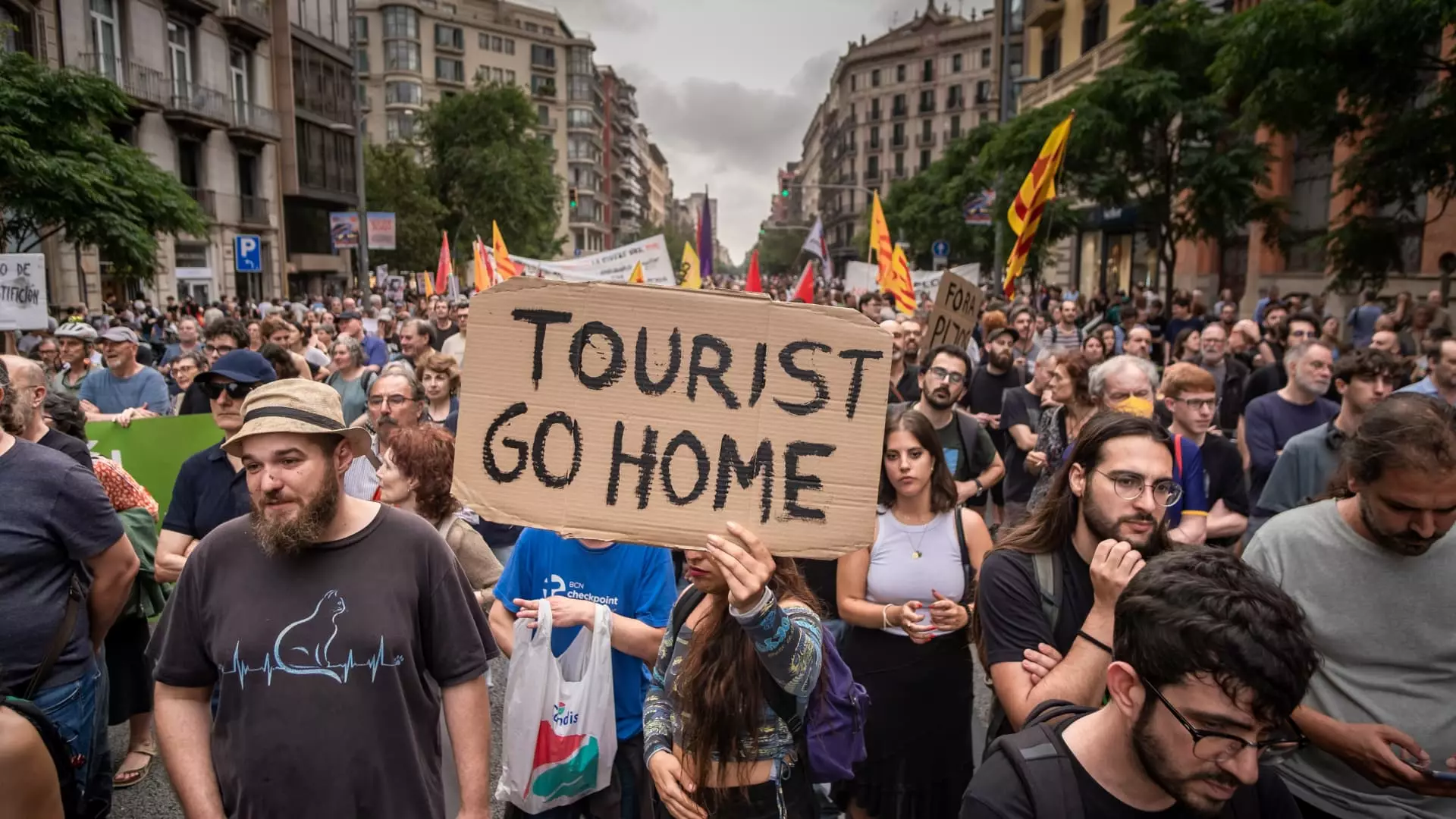In early July, a significant anti-tourism protest unfolded in Barcelona, resulting in thousands marching through the city’s vibrant streets. Their battle cry, “Tourists go home!” echoed the frustrations of many residents who find their lives increasingly impacted by the surge in tourism. This demonstration illuminated deep-seated tensions between long-standing local communities and the booming tourism sector. Despite scenes of confrontations and the sight of tourists caught in the crossfire—some even targeted with water guns—data from August revealed a simultaneous rise in international arrivals to Spain. In stark contrast to the protests, approximately 10.9 million international travelers visited the country during that month, signaling that the allure of Spain remains strong.
The stark juxtaposition of widespread protests in Barcelona and increasing tourist numbers raises questions about the complex dynamics of tourism and local sentiment. While certain tourists experienced the unrest firsthand, evidence suggests that for many travelers, the protest did not deter their plans. An impressive 2.4 million international travelers visited the Balearic Islands—a popular destination that includes Mallorca—in August, contributing to a notable uptick in arrivals across regions, including Catalonia and Andalusia. Such figures underline the resilience of Spain’s tourism economy, even in the face of vocal opposition.
The discrepancy between the protest’s visibility and its impact on tourist perceptions is further highlighted by a survey from Mallorca’s tourism board. An overwhelming 89% of American travelers were either unaware of the protests or unconcerned about their presence. Of those who were informed, nearly 70% indicated it had no bearing on their travel plans. This implies a disconnect between local issues and international perceptions. While Booking.com reported no significant shift in travel bookings, RateGain, a company analyzing tourism data, observed an initial decline in hotel bookings in Barcelona, showing that the protests did provoke a temporary reaction. However, this dip in travel interest was short-lived, as bookings rebounded within weeks, indicating a broader commitment by travelers to visit despite protests.
Amid the tumult of public sentiment surrounding tourism, local organizations continue to push back, demanding more from city officials. The Assembly of Neighbourhoods for Tourism Degrowth, organizers behind the July protest, aim to address the systemic issues of overtourism through a series of bold demands. These include reversing expansions of the airport, limiting cruise terminal operations, and reducing the short-term rental market. The organization insists that the protest signals not an end but the beginning of an intensified struggle against the pressures of tourism on everyday life.
In response, the Barcelona City Council has started implementing his new strategies to mitigate the effects of high tourist volumes. Their recent “Government Measure For Tourism Management 2024-2027” ambitiously outlines 55 initiatives designed to better balance the needs of tourists with those of local residents. However, critics like Daniel Pardo Rivacoba argue that these measures are merely superficial, failing to address the core issues of tourism management that threaten Barcelona’s social and environmental landscapes.
Barcelona wrestles with a pressing conundrum: how to harness the economic benefits of tourism, which contributes 14% to its GDP, while ensuring the quality of life for its residents does not deteriorate. The city’s spokesperson emphasizes the necessity of focusing on managing visitor flows rather than merely accommodating increasing numbers, introducing innovative technology such as mobile monitoring tools to alleviate congestion. Yet, from the protesters’ perspective, these strategies fall short, as they believe even the increased flattening of visitor numbers could prove insufficient.
The recent increase of the tourism surcharge by €4 ($4.38) has also sparked discontent among protest groups, who argue these financial measures do little to truly lessen tourism arrivals. Rivacoba articulates a widespread skepticism in the community, with public opinion shifting from viewing tourism as an economic boon to recognizing its disruptive potential.
The future of tourism in Barcelona hinges upon a delicate balance between economic viability and quality of life for residents. Rivacoba noted a marked shift in media coverage of overtourism from neglect to scrutiny, buoyed perhaps by growing understanding and support from both local communities and international journalists. This evolving landscape reveals the necessity for ongoing dialogue among residents, government authorities, and travel companies to cultivate a more sustainable future for tourism.
The protests and their aftermath underline the urgent need for a serious reconsideration of how tourism shapes local communities. As residents continue to rally and voice their concerns, the question remains: Will the city effectively address the growing discontent, or will it perpetuate a cycle of social strain in the face of relentless tourism growth? The answer lies in collaborative and informed efforts, as affected entities work together to forge solutions that could redefine the tourist experience in Barcelona for generations to come.


Leave a Reply